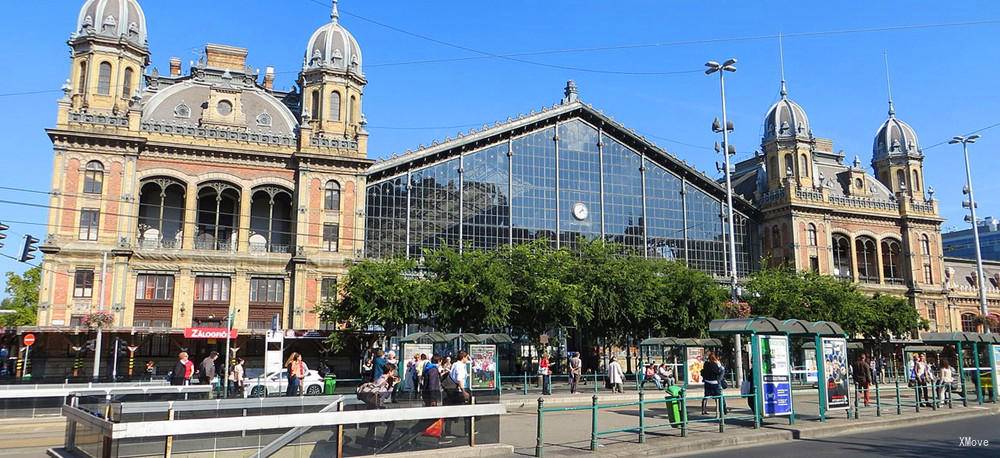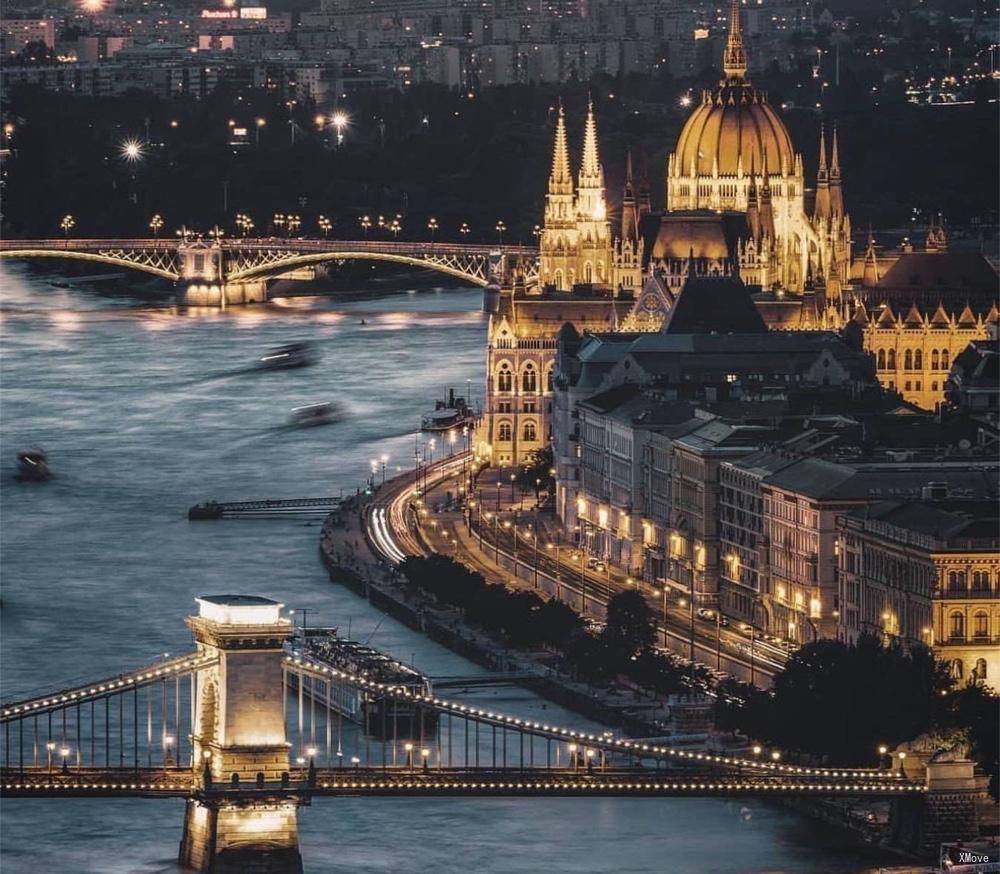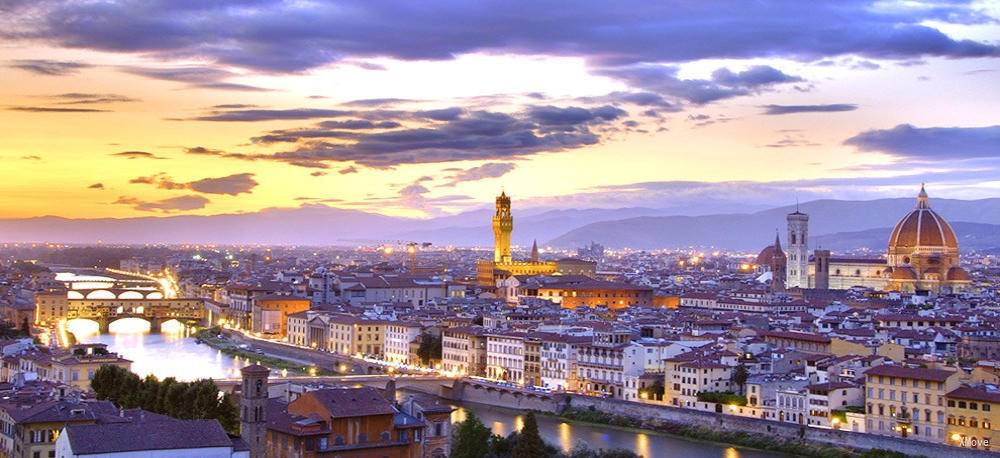Budapest Nyugat Station to Florence: Trains, Buses, Fares, Today's Connections, Routes, Duration, Types of Trains, Station Guides, Tips, Journey
Hungary Train Tickets
Scan QR code, download G2Rail App to see Budapest Nyugat Station's more live update, station guide, plan and photos



Train schedule Budapest Nyugat Station(Budapest Nyugati) to Florence(Firenze)
Popular train routes departing from Budapest Nyugat Station(Budapest Nyugati)
* Muenchen Hbf(München Hbf)
* Belgrade(Beograd)
* Graz Central(Graz Hbf)
* Parndorf Bhf Central(Parndorf Bhf (Main))
* Bratislava
* Kolin(Cz)(Kolín)
* Paderborn Central(Paderborn Hbf)
Popular train routes arriving in Budapest Nyugat Station(Budapest Nyugati)
* Goeppingen(Göppingen)
* Kiev
* Landstuhl
* Zürich Hb
* Sofia
* Zagreb
* Zagreb
Popular train routes departing from Florence(Firenze)
* Muenchen Hbf(München Hbf)
* Rimini
* Pisa Central(Pisa Centrale)
* Padova
* Parma
* Genoa Brignole(Genova Brignole)
* Genève Gare Cornavin
Popular train routes arriving in Florence(Firenze)
* Paris Lyon Station(Paris Gare De Lyon)
* Paris Lyon Station(Paris Gare De Lyon)
* Fiumicino Aeroporto (Roma)(Roma Fiumicino Aeroporto)
* Spiez
* Vienna Central Station(Wien Hbf)
* Paris Lyon Station(Paris Gare De Lyon)
* Brig

Budapest Nyugat Station
Introduction
Budapest West Station is one of the three main railway stations in Budapest (along with Budapest East and South Station), in the 6th arrondissement.
In 1846, Hungary's first railway line, the end of the Pace-Watt line, was built here. In order to build the big ring road (Nagykörút), the old station was demolished. The new station was built by Eiffel and opened on October 28, 1877.
The Nyugati tér, next to the station, is a transport hub, Teréz körút, Szent István körút, Váci út. Bajcsy-Zsilinszky út meets here, with several bus lines, trams 4 and 6 and the West Station of Budapest Metro Line 3.
The Hungarian National Railway opens a shuttle bus between the station and the Budapest International Airport Terminal 1, which takes approximately 25 minutes to run, costs 365 Hungarian Forints, runs 2-3 times per hour.
Platform
The station layout is simple. Most international and domestic express trains depart from Central Station platform 10-13, while Central Station is only a few steps away from the main hall directly opposite the train station.
subway
(1) The underground station of Budapest West Station is closer to the city centre and the tourist center of Budapest than the Keleti train station.
(2) The Budapest West Railway Station is located in a smarter area of the town than Keleti. In fact, this is a good place to be used as a base for exploring the city.
(3) The EC train's current travel time has been shortened by about 20 minutes. In the past, he had to bypass Budapest for half a lap to reach the Keleti station.
Budapest Nyugat Station - Station Guide | Departures and Arrivals | Popular Routes

Budapest (, Hungarian pronunciation: [ˈbudɒpɛʃt]) is the capital and the most populous city of Hungary, and the tenth-largest city in the European Union by population within city limits. The city has an estimated population of 1,752,286 over a land area of about 525 square kilometres (203 square miles). Budapest is both a city and county, and forms the centre of the Budapest metropolitan area, which has an area of 7,626 square kilometres (2,944 square miles) and a population of 3,303,786, comprising 33% of the population of Hungary.The history of Budapest began when an early Celtic settlement transformed into the Roman town of Aquincum, the capital of Lower Pannonia. The Hungarians arrived in the territory in the late 9th century. The area was pillaged by the Mongols in 1241. Buda, the settlements on the west bank of the river, became one of the centres of Renaissance humanist culture by the 15th century. The Battle of Mohács, in 1526, was followed by nearly 150 years of Ottoman rule. After the reconquest of Buda in 1686, the region entered a new age of prosperity. Pest-Buda became a global city with the unification of Buda, Óbuda, and Pest on 17 November 1873, with the name 'Budapest' given to the new capital. Budapest also became the co-capital of the Austro-Hungarian Empire, a great power that dissolved in 1918, following World War I. The city was the focal point of the Hungarian Revolution of 1848, the Battle of Budapest in 1945, and the Hungarian Revolution of 1956.Budapest is an Alpha − global city with strengths in commerce, finance, media, art, fashion, research, technology, education, and entertainment. It is Hungary's financial centre and was ranked as the second fastest-developing urban economy in Europe. Budapest is the headquarters of the European Institute of Innovation and Technology, the European Police College and the first foreign office of the China Investment Promotion Agency. Over 40 colleges and universities are located in Budapest, including the Eötvös Loránd University, the Semmelweis University and the Budapest University of Technology and Economics. Opened in 1896, the city's subway system, the Budapest Metro, serves 1.27 million, while the Budapest Tram Network serves 1.08 million passengers daily.Among Budapest's important museums and cultural institutions is the Museum of Fine Arts. Further famous cultural institutions are the Hungarian National Museum, House of Terror, Franz Liszt Academy of Music, Hungarian State Opera House and National Széchényi Library. The central area of the city along the Danube River is classified as a UNESCO World Heritage Site and has several notable monuments, including the Hungarian Parliament, Buda Castle, Fisherman's Bastion, Gresham Palace, Széchenyi Chain Bridge, Matthias Church and the Liberty Statue. Other famous landmarks include Andrássy Avenue, St. Stephen's Basilica, Heroes' Square, the Great Market Hall, the Nyugati Railway Station built by the Eiffel Company of Paris in 1877 and the second-oldest metro line in the world, the Millennium Underground Railway. The city also has around 80 geothermal springs, the largest thermal water cave system, second largest synagogue, and third largest Parliament building in the world. Budapest attracts 4.4 million international tourists per year, making it a popular destination in Europe.
Budapest - Guide, Attractions, Tours, Sightseeings | Train from/to Budapest | Popular RoutesFlorence
City Overview
The flowering capital of Florence is one of Europe's most important arts and cultural centers. The old translations of the city, the numerous museums, churches, wet frescoes, sculptures and paintings show the most dazzling treasures of the Renaissance. The masters of the time, such as Michelangelo, Donatello, Rafael and others, have left immortal works of art in this trend. As the capital of the Renaissance, Florence is elegant and elegant, and is the most artistic city in Italy.
Must Visit Attractions
Santa Maria del Fiore Cathedral Cattedrale di Santa Maria del Fiore
The Cathedral of Santa Maria del Fiore is the pride of Florence. The huge red dome left an eternal testimony to the rushing man, and the greatest artists of the time gave him energy and talent. The huge architectural complex is divided into three parts, the church itself, the baptistery and the clock tower, and is listed as a world cultural heritage.
Transportation: Take bus A14/23, 71.
Uffizi Gallery
The Uffizi Gallery has assembled the three masterpieces of the Renaissance - Da Vinci, Michelangelo, Raphael and others, and is one of the most important art galleries in the world.
Transportation: Bus: Take C3 and D to Ponte Vecchio station, get off at Via dei Georgofili and turn to Lungarno degli Archibusieri, walk about 200 meters.
Lord's Square and Palazzo Vecchio
The Piazza della Signoria and the Palazzo Vecchio have been the political center of Florence since the 13th century. This Gothic building with a 94-meter tower is the representative building of the medieval city of Florence during the medieval period.
Transportation: The Municipal Plaza is in the center of the old city. Basically, cars are not allowed to walk through, so it is a walk to get there.
Art Academy Gallery Galleria dell’Accademia
The Art Institute Gallery houses Michelangelo's masterpiece David.
College of Art Address: Gallery of the Academy, Via Bettino Ricasoli, 60, 50122 Firenze can be navigated locally
Ponte Vecchio
The Old Bridge is one of the most distinctive and oldest bridges in Florence. The most famous and oldest bridge on the Arno River bears witness to the prosperity and decline of the entire city of Florence. It was built in the Middle Ages, and the baptism of the war and the invasion of the floods have always stood tall and become the only places where tourists come to Florence.
Gourmet & Accommodation & Shopping
- ##### Gourmet
In addition to art, Florence has a lot of deep food! Tuscan steaks and red wine are also part of the Flora culture. The center of the old city is not big, there are always restaurants of all sizes, big and small!
Florence's Eataly is located on the top floor of the San Lorenzo indoor market. It is a lively restaurant and a big food store. The dining environment is lively and relaxing. There are snacks and big dishes, desserts and drinks. After eating, you can buy some specialty foods. Probably the reason for being in the market, the restaurant grade and price in this Eataly are more intimate than the Eataly in Milan.
- ##### Accommodation
If you are considering the convenience of transportation, it is recommended to live in the vicinity of the subway station or train station, such as SPAGNA (Spain Square), TERMINI (Central Station) and BARBERINI (Barberini Square) station. Among them, TERMINI has a wide range of hotels from the B&B to the 5-star superior hotels. It is also the most concentrated area for cheap accommodation in Florence. The Chinese hotels are basically located in this area, with cheap prices and convenient transportation. This area has a market in the morning, and it is convenient to buy food.
If the budget is taken into account, the price of hotels near the Euroline bus stop is cheaper than that of the city center. The supermarkets and the necessary facilities for living are complete and the transportation is convenient. The advantage of staying here is that you can easily reach the main sights of Rome and the Vatican by bus or subway, and you can easily travel to Venice, 翡 翠 甚至 and even France, suitable for tourists with a small budget.
- ##### Shopping
Florence is one of the famous shopping cities in Italy. In the city center, there are a lot of products that can make people pick their eyes, leather products, textiles, handicrafts, etc. It is famous for its art crafts and textiles, and it is made of glassware and ceramics. Leather based. Handicrafts such as gold and silver processing and art reproductions are also famous. In the narrow lanes, there are small shops with different sizes.
Luisa Via Roma is a world-renowned high-end fashion store with its exquisite products and excellent service. It is located in the heart of the Renaissance city of Florence, next to the famous Cathedral of Santa Maria del Fiore, and you can do it while you are visiting.
Traffic in the city
Trains to Florence are usually docked at the Santa Maria Novella station, making it easy to transfer buses or taxis. The station is just a few blocks from the cathedral and is almost centrally located.
Some IC live RE trains rely on stations located in the suburbs. When you take a ride, you must first confirm, so as not to get the wrong station. The public transport in Florence includes buses and trams, but most of the attractions are concentrated in the central station, within 3 km of the southeast, the building is very concentrated, and it is also a very comfortable city, as long as you can reach the main attractions on foot.
Florence Card
Although this card is so expensive, although it does not necessarily provide you with the free public transport function, if you plan to sweep out the museums and sights in Florence, and avoid the long queues, Then maybe you can consider spending a lot of money on pain, buy this card, including the Uffizi Gallery, the Academy of Fine Arts, etc., all within three days of validity, no appointment, no queue at the ticket gate, long drive straight into 72 Art galleries, churches and attractions.
Florence - Guide, Attractions, Tours, Sightseeings | Train from/to Florence | Popular Routes
Hungary Train Tickets
Scan QR code, download G2Rail App to see Budapest Nyugat Station's more live update, station guide, plan and photos



Hot Journeys
* Frankfurt -> Cologne(Köln)
* Venice(Venezia) -> Rome(Roma)
* Kyoto(京都) -> Tokyo(東京)
* Prato(Prato) -> Florence
* Florence -> Milan
* London(London) -> Brussels(Bruxelles)
* Milan -> Venice(Venezia)
* Venice(Venezia) -> Florence
* Brig -> Andermatt
* Seoul(서울) -> Andong Si(안동시)
* Rome(Roma) -> Milan
* Milan -> Venice(Venezia)
* Naples -> Rome(Roma)
* Nice -> Paris
* Rome(Roma) -> Florence
* Dusseldorf(Düsseldorf) -> Munich(Müchen)
* Stuttgart -> Frankfurt
* Helsinki(Helsinki) -> Rovaniemi(Rovaniemi)
* Naples -> Florence
* Naples -> Florence
* Cologne(Köln) -> Frankfurt
* Dusseldorf(Düsseldorf) -> Frankfurt Airport(Frankfurt Flughafen)
* Berlin(Berlin) -> Munich(Müchen)
* Beijing(北京) -> Shanghai(上海)
* Rome(Roma) -> Venice(Venezia)
* Florence -> Pisa
* Geneva(Genève) -> Paris

